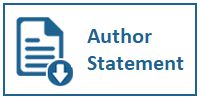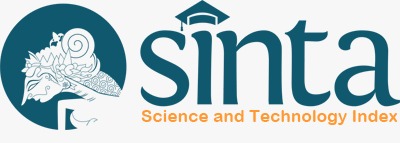Developing an Android-based Tour Guide Application
DOI:
https://doi.org/10.31937/ti.v17i1.3704Abstract
Yogyakarta, renowned as a student city, is also one of Indonesia's top tourist destinations. Its distinctive local culture attracts many visitors, particularly for traditional shopping experiences. An application named Sipasar now offers information about the traditional markets in Yogyakarta. Additionally, the tourism information currently available from the government agency TIC (Tourist Information Center) is only provided in the form of brochures. This information is not very comprehensive as it is limited to the brochure and is also not very up to date because the brochures are printed only in certain years. There is a need to develop an application that can fulfill the tourism information needs of Yogyakarta from the Sipasar application. Besides containing market information, this application also serve as a tour guide capable of providing route and navigation guidance, as well as helping tourists obtain information about local tourist destinations. To address these requirements, an Android-based application called Sipasar Tour Guide was developed. The application underwent blackbox testing to verify the functionality of all features. Moreover, the application was evaluated by respondents using the MARS (Mobile Application Rating Scale) method. This method involved 25 respondents using the application first, then answering questions by giving ratings on a scale of 1 which is the worst to 5 which is the best score. The data analysis results showed that the designed Sipasar Tour Guide application successfully met the needs of providing tourism information to users which is proven by the score of the average from all the answers at 4,5 of 5 scales or 90%, as well as providing routes and navigation for trips. This was proven not only by the results of the blackbox testing but also by the respondents' ratings during the application testing using the MARS method. The highest ratings from the four dimensions (usability, functionality, aesthetics, and information quality) were in functionality and information quality, with percentages of 92.4% and 91.6%, respectively.
Downloads
Additional Files
Published
How to Cite
Issue
Section
License
Copyright (c) 2025 Imanuel Vicky Sanjaya, Restyandito Restyandito, Maria Nila Anggia Rini, Andhika Galuh Prabawati

This work is licensed under a Creative Commons Attribution-ShareAlike 4.0 International License.
Authors retain copyright and grant the journal right of first publication with the work simultaneously licensed under a Creative Commons Attribution-ShareAlike International License (CC-BY-SA 4.0) that allows others to share the work with an acknowledgement of the work's authorship and initial publication in this journal.
Authors are able to enter into separate, additional contractual arrangements for the non-exclusive distribution of the journal's published version of the work (e.g., post it to an institutional repository or publish it in a book), with an acknowledgement of its initial publication in this journal.
Copyright without Restrictions
The journal allows the author(s) to hold the copyright without restrictions and will retain publishing rights without restrictions.
The submitted papers are assumed to contain no proprietary material unprotected by patent or patent application; responsibility for technical content and for protection of proprietary material rests solely with the author(s) and their organizations and is not the responsibility of the ULTIMATICS or its Editorial Staff. The main (first/corresponding) author is responsible for ensuring that the article has been seen and approved by all the other authors. It is the responsibility of the author to obtain all necessary copyright release permissions for the use of any copyrighted materials in the manuscript prior to the submission.















